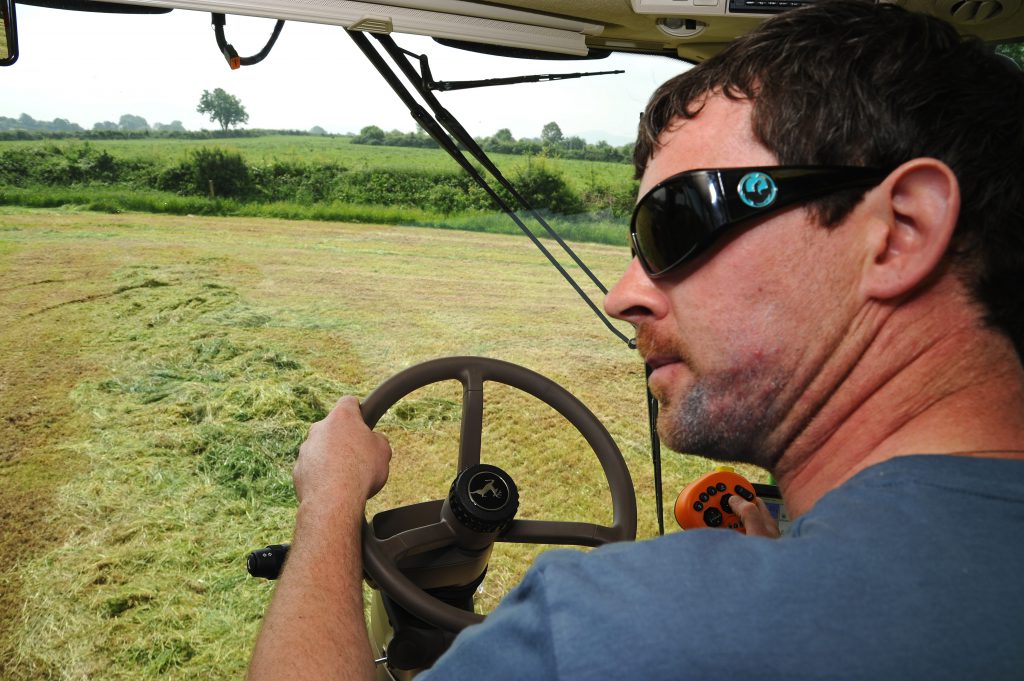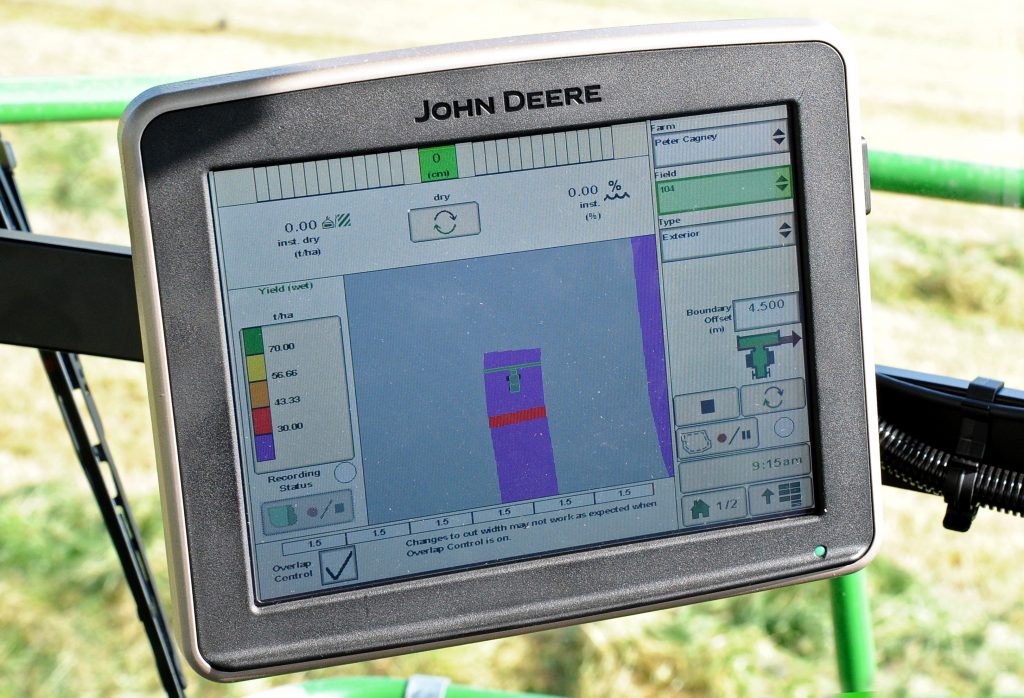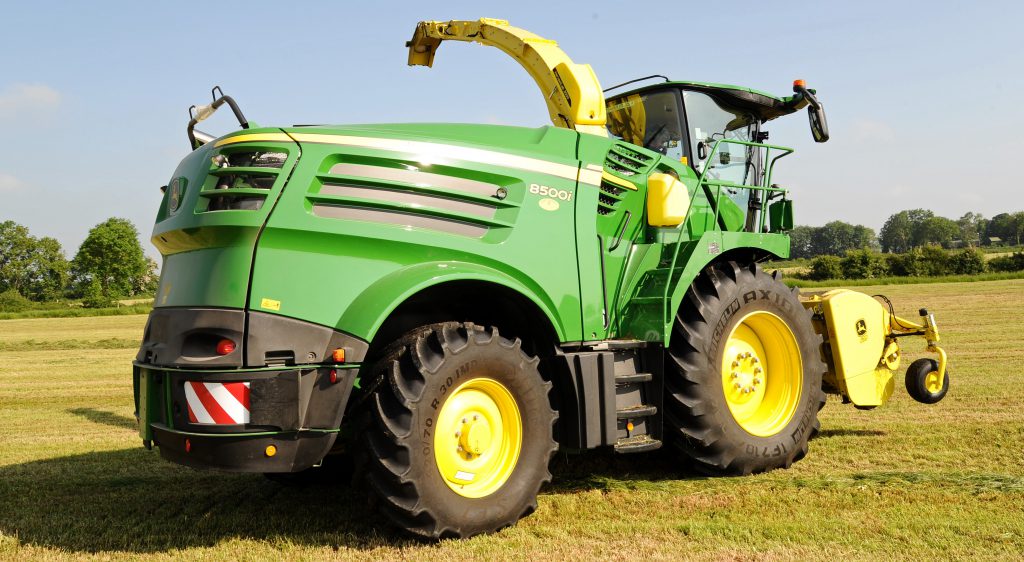Bertie Cahill is impressed by the new John Deere 8500i he had out on a day’s demo. “It’s a lot quicker than my present harvester,” he noted.
That’s odd, because there is just 17hp difference between his 2014 John Deere 7840 and this latest model – currently for sale at Geary’s Garage of Co. Limerick.
Bertie (pictured below) knows a thing or two about John Deere harvesters; he has operated a series of them in his contracting business – based at Ballingarry, Co. Limerick, over the years. He has pretty well stuck to the brand ever since he started out in 1980.
On the day of Agriland’s visit, the machine was chopping and loading 50ac of grass before a haul of around six miles back to the home farm of Peter Carey.
Even with seven good-sized trailers working alongside, it was still the harvester that was having to occasionally wait between loads – while the Komatsu WA320 loader never had a quiet moment on the pit.
Quite why the new model should be so much quicker is difficult to pin down. Bertie and his regular driver, Patrick Taylor, hadn’t had the time to consider the question too deeply – but both mentioned its ‘usability’ as being far better than the old.
Patrick (pictured below) also went on to mention its improved balance and stability on the road, noting that the engine is now placed further back – over the rear axle.
The extra space between the engine and cab also allows for easier unblocking of the chute – although it appears that blockages are far less likely. That’s because, Patrick says, “it deals with the lumps in the swath much better”.
Incremental improvements in the design of the machine and how it processes the crop would appear to be the key to its greater output. As such, it does throw into question the need for ever larger machines.
Intelligent design, for instance, may achieve as much as throwing 50-100hp more at the job.
From a practical point of view, there is little that either Bertie or Patrick have found to detract from the harvester. Vision over the header, and the new control layout, come in for particular praise.
Yet, Patrick feels that the mirrors are vulnerable to the otherwise delightful charms of narrow county lanes.
The John Deere 8500i is quite different from 7000 Series machines.
The ‘i’ indicates that it is fully equipped to blend into the company’s ‘Agricultural Mangement Solutions’ (AMS) package – a series of programmes that connect all modern John Deere machinery into what may be described as the ‘John Deere digital landscape’.
In this scenario tractors, implements, operators, contractors, dealers, etc, are all interconnected. Data is shared between them in a bid to improve both farm and machine management.
John Geary, of Geary’s Garage, believes there are many advantages to such a system and notes that, even while the brand new harvester was working in the field, engineers over in the UK were monitoring its performance and fine-tuning its set up.
It is not only the machine’s running performance that is subject to AMS. The harvester is also equipped with a sensor that can measure such parameters as the protein content of the grass – along with energy, fibre and dry matter.
This last reading may be used to automatically adjust the additive application rate or alter chop-length. The sensory system is called ‘HarvestLab 3000’ and has a large gamut of capabilities and applications beyond silage production.
A screen inside the cab displays much of the information in ‘real-time’, including crop weight and dry matter.
The data collected can be used in many ways. Having a good idea of silage quantity and quality at the time of harvest, for example, can help plan winter rationing and enable forward-buying of extra feed.
However, there is a danger of ‘data overload’. Bertie noted: “There is just too much information for farmers to use.”
On a personal basis, he wonders whether farmers will ever see the value in the extra digital capabilities.
He himself is no slouch when it comes to adopting technology; over the years he has enthusiastically embraced the ability for drivers to communicate with both him, and each other, using two-way radios and now smartphone technology.
One downside of the ever-shortening silage season, Bertie has noticed, is the difficulty in obtaining staff.
Lads just aren’t interested in two weeks’ work; the season has just gotten far too short for it to be worthwhile for many.
It is ironic that the ever-greater efficiency of machines has contributed to a shortage, rather than a surplus, of staff.









